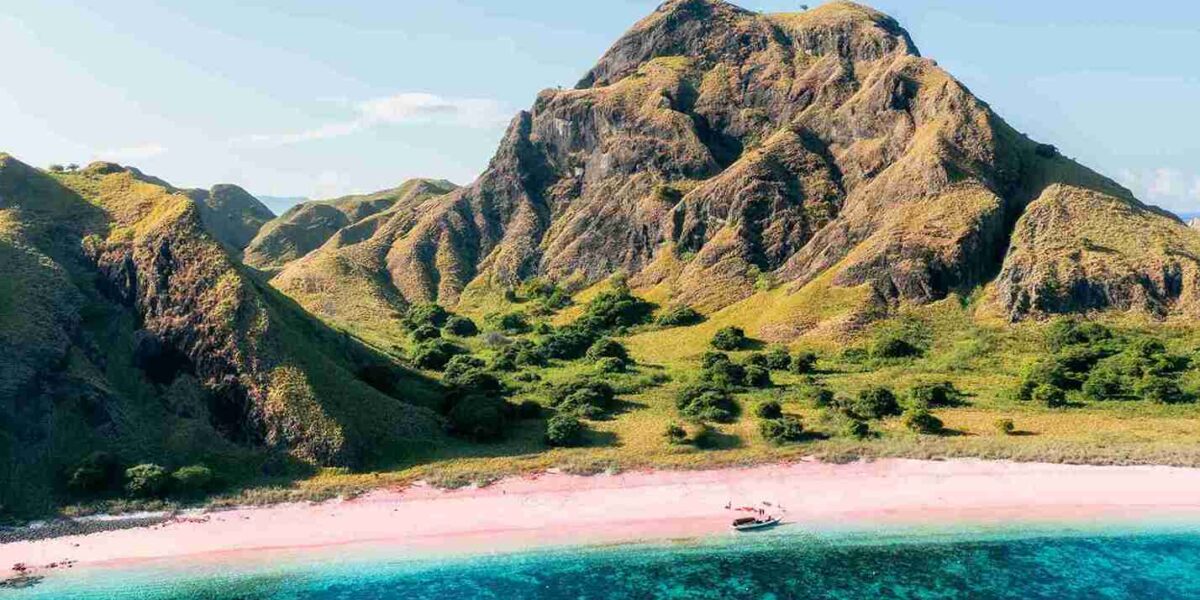Komodo National Park is celebrating its 44th anniversary today! To mark this significant milestone, KomodoLuxury is celebrating its 44th birthday with answers to frequently asked questions and things to do when visiting the Komodo national park.
History of Komodo National Park
Komodo National Park was established in 1980 in Komodo District, Manggarai Regency, East Nusa Tenggara Province. The park was established to protect Komodo dragons and their habitat.
The Komodo dragon (Varanus komodoensis Ouwens) is an ancient and endangered species. It can only be found in the Komodo National Park. The Komodo dragon is a giant lizard that can be up to 2-3 meters in length and 165 kg in weight.
Since the Komodo dragon was first introduced to the world, Komodo dragons on Komodo Island have come under pressure from exploitation for research and zoos abroad. Conservation efforts have been made by the Indonesian government from the time of independence until the present day to protect the habitat and preserve this ancient animal.
The history of Komodo National Park management since the 19th century makes it one of the conservation areas with an essential and complete record of the conservation journey for people to learn from today.
Komodo dragons were first scientifically studied in 1911 by JKH Van Steyn. Since then, conservation goals have expanded to protect the full range of marine and terrestrial biodiversity. Due to its uniqueness and rarity, UNESCO declared Komodo National Park a World Heritage Site and a Man and Biosphere Reserve in 1986.
The Timeline History of the Komodo National Park
- 1910: Komodo dragons introduced to the world by JKH Van Steyn Van Hensbroek
- 1912: The scientific name Vranus komodoensis Ouwens was given by Peter A. Ouwens.
- 1926: Bima Sultanate Decree and Manggarai Kingdom Decree issued to protect Komodo dragons.
- 1927: Issuance of Timor resident decree on Komodo monitor lizard protection
- 1938: Designation of Rinca and Padar Island Wildlife Sanctuary
- 1965: The establishment of the Komodo Island Wildlife Sanctuary.
- 1977: The United Nations Educational, Scientific and Cultural Organisation (UNESCO) designated the Komodo Biosphere Reserve’ in the nature and biosphere reserve programs.
- 1980: Designation as Komodo National Park.
- 1991: UNESCO designated it a World Heritage site, and President Soeharto designated the Komodo dragon a national animal.
- 2013: New 7 Wonders Foundation designation as one of the New 7 Wonders (Nature)
Where is Komodo National Park
Komodo National Park is located between Sumbawa and Flores Island, in the east of Indonesia Archipelago. Administratively, this park is located in the Komodo Subdistrict, West Manggarai Regency, East Nusa Tenggara Province.
This park covers an area of 173,300 hectares of land and sea with five main islands, namely the island of Komodo, the island of Padar, the island of Rinca, Gili Motang, Nusa Kode, and other small islands.
Not only a home for approximately 2,500 Komodo dragons, this park is also home to other terrestrial fauna, such as various species of reptiles, birds, and mammals. This park is renowned for its breathtaking landscapes and uniquely diverse terrain, consisting of mountainous hills, tropical rainforests, and beautiful white sandy beaches.
How to Get to Komodo National Park
Getting to Komodo Island must be an exciting journey. Stunning landscapes, beautiful beaches, and unique biodiversity distinguish Komodo Island, making it the only place to find these natural wonders.
1. Take a Flight to Komodo National Park
First, you have to take a flight from any big city in Indonesia to the nearest airport, Labuan Bajo Komodo Airport. Labuan Bajo Komodo Airport is located in Labuan Bajo town, Flores Island. This airport is the central getaway to explore the magnificent Komodo National Park.
2. Boat Tour to Komodo National Park
Upon arriving at Labuan Bajo Airport, you must connect your trip to Labuan Bajo Harbor, as the island is accessible only by Komodo Island boat tour. The distance between Labuan Bajo Airport and Labuan Bajo Harbor is relatively short, approximately two to four kilometers.

You can choose between chartering a private boat or joining a guided tour to explore the island in Labuan Bajo. To simplify your visit, we recommend you join a boat trip to Komodo Island by KomodoLuxury. As a reputable travel agency, KomodoLuxury allows travelers to experience staying and living aboard a luxurious Phinisi boat.
Best Things To Do in Komodo National Park
Komodo National Park offers many attractions. The following are the best things to do in the park.
1. Komodo Island: Home of the Dragons
The main attraction of this park is the once-in-a-lifetime opportunity to witness the Komodo dragons on Komodo Island. Visitors should urge themselves to keep their distance and exercise caution, although the sight is impressive.
2. Padar Island: A Paradise for the Hikers
Padar Island boasts panoramic views renowned worldwide. The most scenic viewpoint is an X shape with three bays, where you can see a white beach, a black beach, and a pink beach.
3. Pink Beach: A Unique Coastal Gem
Microscopic red coral fragments blend with the white sands of Pink Beach, giving it its mesmerizing hue and making it one of only a few beaches in the world with such a name. You can enjoy sunbathing while lying on the beautiful pink sand.
4. Rinca Island: Wild Adventure Awaits
You can witness the Komodo dragon live leisurely on Rinca Island. This island is also home to many terrestrial wildlife, including wild water buffalos, Timor deer, wild horses, and others.
5. Manta Point: Swim with the Majestic Manta Rays
Manta Point is a must-visit for snorkelers and divers. It offers the exhilarating experience of swimming alongside the majestic Manta rays. These magnificent large creatures swim through the abundant nutrient-rich waters, creating a memorable underwater encounter.
Komodo National Park offers a blend of thrilling wildlife encounters, breathtaking landscapes, and unforgettable adventures. Let’s explore the Komodo Island boat tour with us while respecting and preserving its natural beauty.
Read more: How to Travel to Komodo Island 2024 – Visit Komodo National Park






















